What is AC DC Step-up Voltage Converter Transformer?
Step-up voltage converter is a common transformer in the production and living. People may not know much about step-up voltage converter, so today we will talk about some common sense of step-up voltage converter.
I. Definition
In fact, the so-called step-up voltage converter is a device to convert a certain value alternating voltage into another value alternating voltage with the same frequency. It uses widely in high-frequency fields, such as 110V convert to 220V, and so on.
II. Types and characteristics
1. High-frequency step-up voltage converter
The step-up voltage converter with high frequency voltage rectifier circuit uses the latest PWM technology, based on the principle of electromagnetic compatibility to make DC generator to achieve high-quality. It mainly consists of a control box and a unit of double voltage, with internal protection resistor. The power converter has the function of overcurrent and overvoltage protection. With the advantages of small size, light weight, easy to carry, easy to use, high security, reliable, the voltage converter is suitable for field high-voltage direct current test, arrester DC characteristics test and other places required DC high-voltage.
2. DC step-up voltage converter
DC step-up voltage converter has advantages of small size, light weight, compact structure, functional versatility and easy to use. Particularly for power systems, industrial and mining enterprises and other high-voltage electrical equipment, electrical components, insulation material sinks frequency or test dielectric strength under DC high-voltage. It is essential for high-voltage test equipment. Because of its high-quality cold-rolled silicon steel plates stacked composition, miter joints, effectively reducing the vibration and noise during operation.
3. AC step-up voltage converter
AC step-up voltage converter is to convert AC voltage, AC step up voltage converter have the features of small size, light weight, compact, full-featured, versatile and easy to use. Especially suitable for power systems, industrial and mining enterprises, scientific research and other departments for a variety of high-voltage electrical equipment, electrical components, insulation material sinks under AC high frequency or dielectric strength test.
4. Dry-type step-up voltage converter
With respect to the oil-type voltage converter, dry-type step-up voltage converter due to no internal boost oil, so there is no fire, explosion, pollution and other problems. In the electrical specifications and procedures don’t require dry-type voltage converter to be placed in a separate room. Especially for the new series, consumption and noise are reduced to a certain level, and also can be placed on the same room with other voltage converter and low voltage device. Operational safety and service life of dry-type step-up voltage converter depends on voltage converter winding insulation whether is the safety and reliability.
5. Low-frequency step-up voltage converter
Low-frequency voltage converter core flux is related to the applied voltage. Excitation current will not increase with the load. Even if the load increases, the core is not saturated, the coil resistance loss will increase, then coil will cause damage beyond the rated capacity of the coil due to the heat generated can’t be discharged timely. If the coil is made of a superconducting material, the current increases while not cause fever, but magnetic leakage of voltage converter internal will cause impedance. When the current increases, the output voltage drops. The greater the current, the output voltage will be lower. It shows that the voltage converter output power can’t be unlimited.
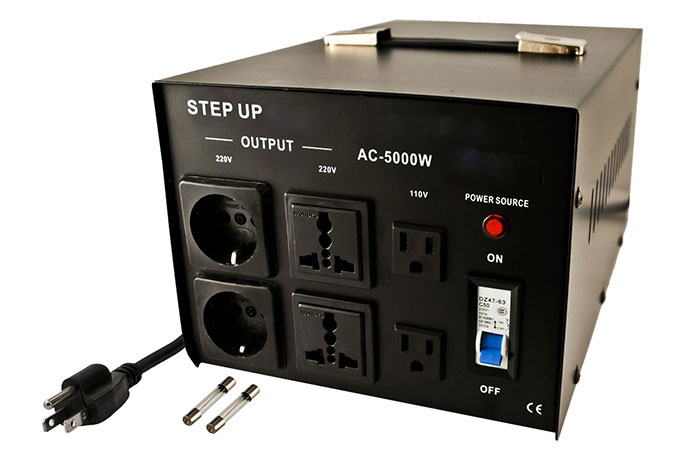
I. Definition
In fact, the so-called step-up voltage converter is a device to convert a certain value alternating voltage into another value alternating voltage with the same frequency. It uses widely in high-frequency fields, such as 110V convert to 220V, and so on.
II. Types and characteristics
1. High-frequency step-up voltage converter
The step-up voltage converter with high frequency voltage rectifier circuit uses the latest PWM technology, based on the principle of electromagnetic compatibility to make DC generator to achieve high-quality. It mainly consists of a control box and a unit of double voltage, with internal protection resistor. The power converter has the function of overcurrent and overvoltage protection. With the advantages of small size, light weight, easy to carry, easy to use, high security, reliable, the voltage converter is suitable for field high-voltage direct current test, arrester DC characteristics test and other places required DC high-voltage.
2. DC step-up voltage converter
DC step-up voltage converter has advantages of small size, light weight, compact structure, functional versatility and easy to use. Particularly for power systems, industrial and mining enterprises and other high-voltage electrical equipment, electrical components, insulation material sinks frequency or test dielectric strength under DC high-voltage. It is essential for high-voltage test equipment. Because of its high-quality cold-rolled silicon steel plates stacked composition, miter joints, effectively reducing the vibration and noise during operation.
3. AC step-up voltage converter
AC step-up voltage converter is to convert AC voltage, AC step up voltage converter have the features of small size, light weight, compact, full-featured, versatile and easy to use. Especially suitable for power systems, industrial and mining enterprises, scientific research and other departments for a variety of high-voltage electrical equipment, electrical components, insulation material sinks under AC high frequency or dielectric strength test.
4. Dry-type step-up voltage converter
With respect to the oil-type voltage converter, dry-type step-up voltage converter due to no internal boost oil, so there is no fire, explosion, pollution and other problems. In the electrical specifications and procedures don’t require dry-type voltage converter to be placed in a separate room. Especially for the new series, consumption and noise are reduced to a certain level, and also can be placed on the same room with other voltage converter and low voltage device. Operational safety and service life of dry-type step-up voltage converter depends on voltage converter winding insulation whether is the safety and reliability.
5. Low-frequency step-up voltage converter
Low-frequency voltage converter core flux is related to the applied voltage. Excitation current will not increase with the load. Even if the load increases, the core is not saturated, the coil resistance loss will increase, then coil will cause damage beyond the rated capacity of the coil due to the heat generated can’t be discharged timely. If the coil is made of a superconducting material, the current increases while not cause fever, but magnetic leakage of voltage converter internal will cause impedance. When the current increases, the output voltage drops. The greater the current, the output voltage will be lower. It shows that the voltage converter output power can’t be unlimited.

trying to convert 110 volt input Power to 230V output to run a 18,000 Btu air conditioner that's 230V will a Converter work and if so What size do I need to get
Post a Comment:
You may also like:
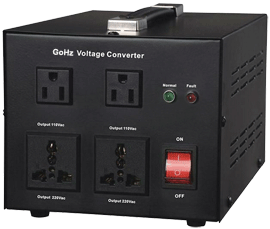
With a Voltage Converter, you can convert
110v to 220v;
120v to 220v;
220v to 110v;
230v to 110v;
240v to 110v.
Note, voltage converters do NOT convert 50Hz to 60Hz, or 60Hz to 50Hz.
Featured Articles
What Happens When an Appliance is ...
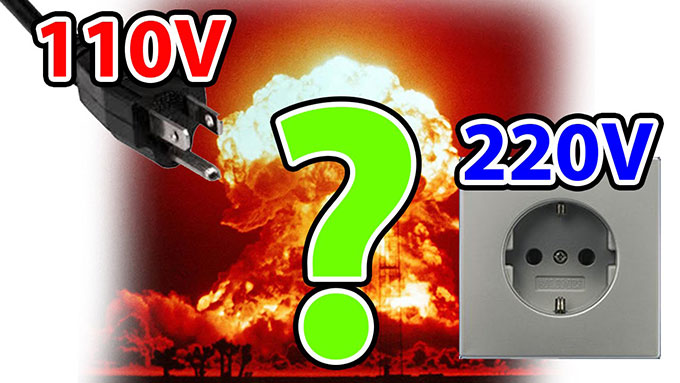 If the 110V appliance is connected to a 220V power supply, the power may quadruple at the moment the appliance switched on, and ...
If the 110V appliance is connected to a 220V power supply, the power may quadruple at the moment the appliance switched on, and ...
 If the 110V appliance is connected to a 220V power supply, the power may quadruple at the moment the appliance switched on, and ...
If the 110V appliance is connected to a 220V power supply, the power may quadruple at the moment the appliance switched on, and ...Automatic 220v to 110v Voltage ...
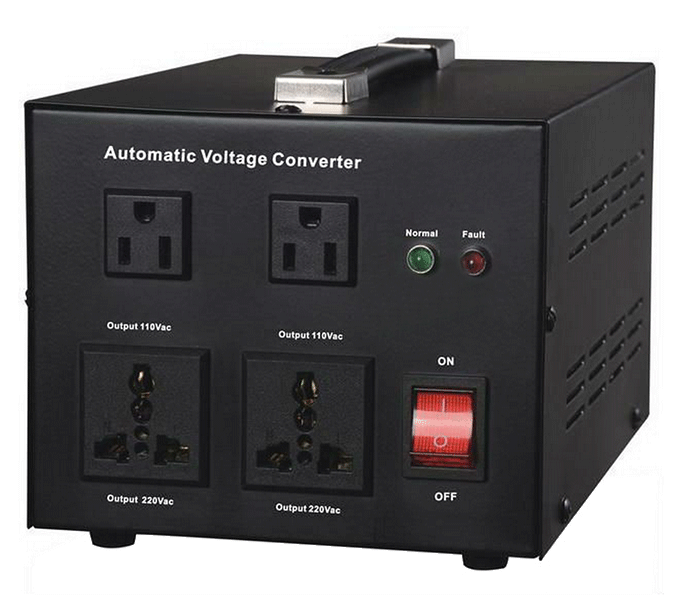 As we know, electric voltage of some countries and regions is 220V. But in America, the electric voltage is generally 110V. When ...
As we know, electric voltage of some countries and regions is 220V. But in America, the electric voltage is generally 110V. When ...
 As we know, electric voltage of some countries and regions is 220V. But in America, the electric voltage is generally 110V. When ...
As we know, electric voltage of some countries and regions is 220V. But in America, the electric voltage is generally 110V. When ...Voltage Difference between US and UK
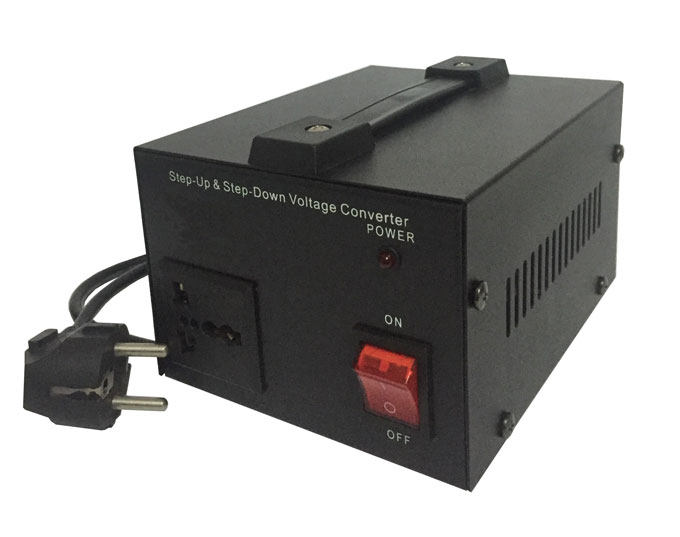 Many people who travel to the United States found it difficult to use their electronic devices, because of different power supply ...
Many people who travel to the United States found it difficult to use their electronic devices, because of different power supply ...
 Many people who travel to the United States found it difficult to use their electronic devices, because of different power supply ...
Many people who travel to the United States found it difficult to use their electronic devices, because of different power supply ...